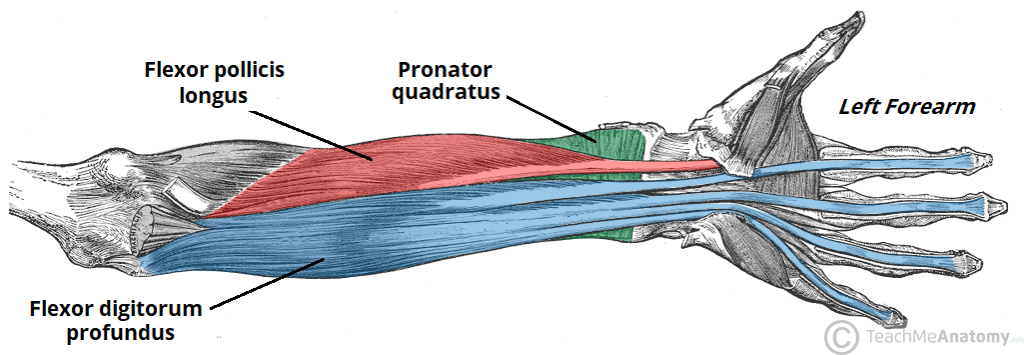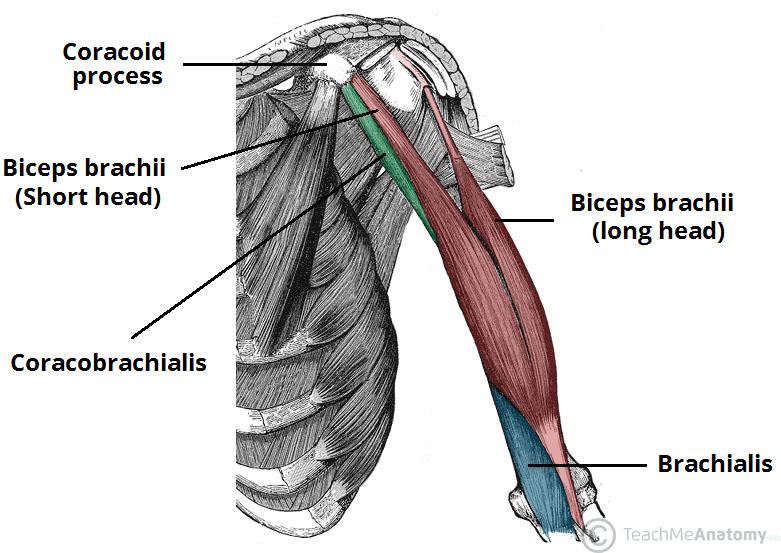
The elbow joint is supported by three ligaments: It consists of three joints the humeroulnar joint, the humeroradial joint, and the proximal radioulnar joint, all within one articular capsule! The elbow joint is a synovial joint that connects the arm and the forearm, providing 150 ْ of extension-flexion movement. Flexion - biceps brachii, brachialis, brachioradialis muscles Ligaments: annular ligament and collateral (radial, ulnar) ligaments Mnemonic: 'Rule of 3s' (3 wrist flexors, 3 finger flexors, 3 wrist extensors, 3 finger extensors, 3 thumb extensors) Flexors: superficial (flexor carpi ulnaris, palmaris longus, flexor carpi radialis, and pronator teres), intermediate (flexor digitorum superficialis, flexor digitorum profundus, and flexor pollicis longus) and deep (pronator quadratus). Extensors: superficial (brachioradialis, extensor carpi radialis longus, extensor carpi radialis brevis, extensor digitorum, extensor digiti minimi, extensor carpi ulnaris, and the anconeus) and deep (supinator, abductor pollicis longus, extensor pollicis brevis, extensor pollicis longus, and extensor indicis) Joints: humeroradial, radioulnar joints (proximal, distal)


Key facts about the elbow and forearm Forearm This article is a guide to help you master the anatomy of the forearm and the elbow joint, using the beautiful content of Kenhub. The forearm helps the shoulder and the arm in force application and the precise placement of the hand in space, with the help of the elbow and radioulnar joints. Extending from the wrist to the elbow joint is the region of the upper extremity called the forearm (antebrachium).


 0 kommentar(er)
0 kommentar(er)
